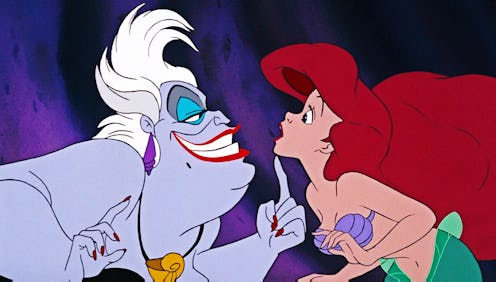
Once upon a time, a little girl with dark brown eyes and dark brown bangs living in a magical, faraway land called Illinois was obsessed with fairy tales. Armed with a cabinet of Disney tapes (VHS and Beta — talk about old school) and a bookshelf of picture books, I devoured works by Hans Christian Andersen and the Brothers Grimm. As a natural reader, however, I soon discovered one teeny tiny thing: the originals were far, far weirder than their Disney correlatives.
The storybooks made an impression, but not as much as a TV show I totally miss: Shelley Duvall's Faerie Tale Theatre. In this live-action show, retellings of fairy tales were cast with '70s and '80s superstars like Christopher Reeves and Teri Garr. Shelley Duvall introduced each episode--and she also introduced young viewers (*raises hand*) to the horrors of "Snow White and the Seven Dwarves" that Disney skipped: not just a poison apple, but a poison comb (ouch) stabbed to the skull and silk laces to suffocate the princess corset-style.
Now I know weirder might also mean misogynistic or pro-rape-culture. (Thankfully today's writers are drafting new fairy tales--for adults and children--that better encompass the range of identities and experiences that characterize contemporary readers.) Still, I'll probably never forget the fairy tales I grew up with — these five are good and weird.
1. The Little Mermaid
The thing I can never forget about Hans Christian Andersen is how decidedly moral his fairy tales are. Consider this first sentence from a 1945 translation of "The Mermaid":
Far out at sea the water is as blue as the bluest cornflower, and as clear as the clearest crystal; but it is very deep, too deep for any cable to fathom, and if many steeples were piled on the top of one another they would not reach from the bed of the sea to the surface of the water.
When steeples are the yardstick, you know you're in for some didacticism. Okay, I digress. What's weird about "The Mermaid" or "The Little Mermaid" (she's the youngest of five sisters) is the endurance of great pain. To show she's of-age — 15 — eight oysters are clamped to her tail. When she gets those human legs? Each step cuts like a knife.
2. Kate Crackernuts
Okay, maybe this one wasn't in your library — it sure wasn't in mine. But a little investigation into "The Twelve Dancing Princesses" led me to its Scottish counterpart. I'm completely interested in this story, especially the way it reverses a common fairy tale motif (dancing princesses). In "Kate Crackernuts," the beloved prince is compelled by fairies to dance to utter fatigue.
3. The Red Shoes
Like "The Little Mermaid," another Anderson tale, "The Red Shoes," spins a narrative of Christian salvation. And, yet again, the heroine must endure excruciating physical circumstances — in this case, shoes that force her to dance nonstop.
4. The Story Of The Man Who Did Not Wish To Die
You can access the Japanese Fairy Book (from 1903) online, and I highly recommend doing so: this collection brought Japanese fairy and folk tales to the United States more than one hundred years ago. In "The Story of the Man Who Did Not Wish to Die," death-fearing Sentaro travels to the land of Perpetual Life on the back of a paper crane. This fairy tale's weirdness isn't fantastical or magical; the strangeness comes from how cannily the story addresses mortality. Eep!
5. Rapunzel
This Brothers Grimm story kicks off with a pregnant woman's craving for a salad green (also called a rapunzel), which pretty much sets the bar for weirdness! Fun fact: lauded illustrator Paul O. Zelinsky chronicles his family's experience planting rampion — his best-guess for rapunzel — on his blog, with pics.
Images: Walt Disney Pictures; Giphy (5)